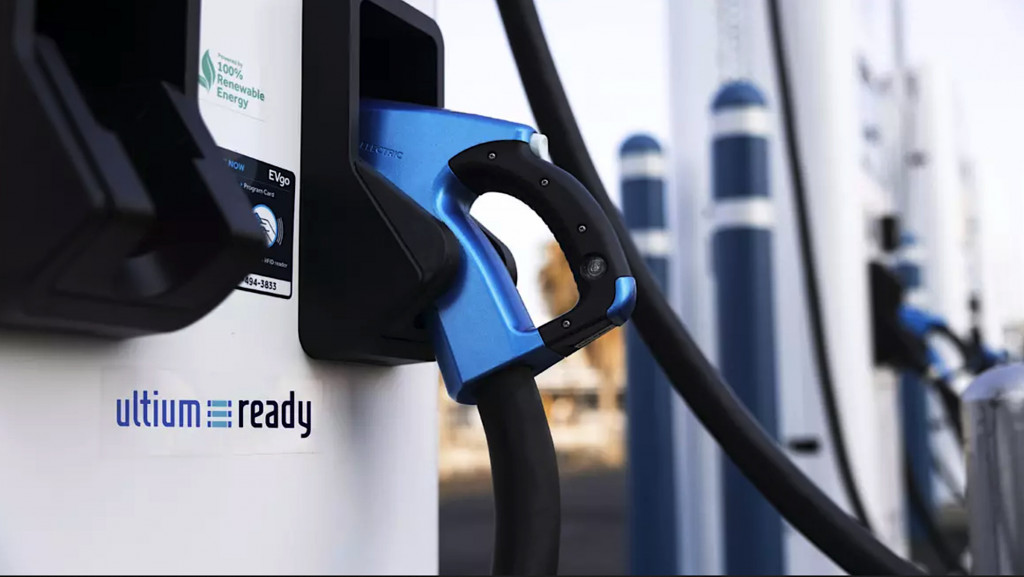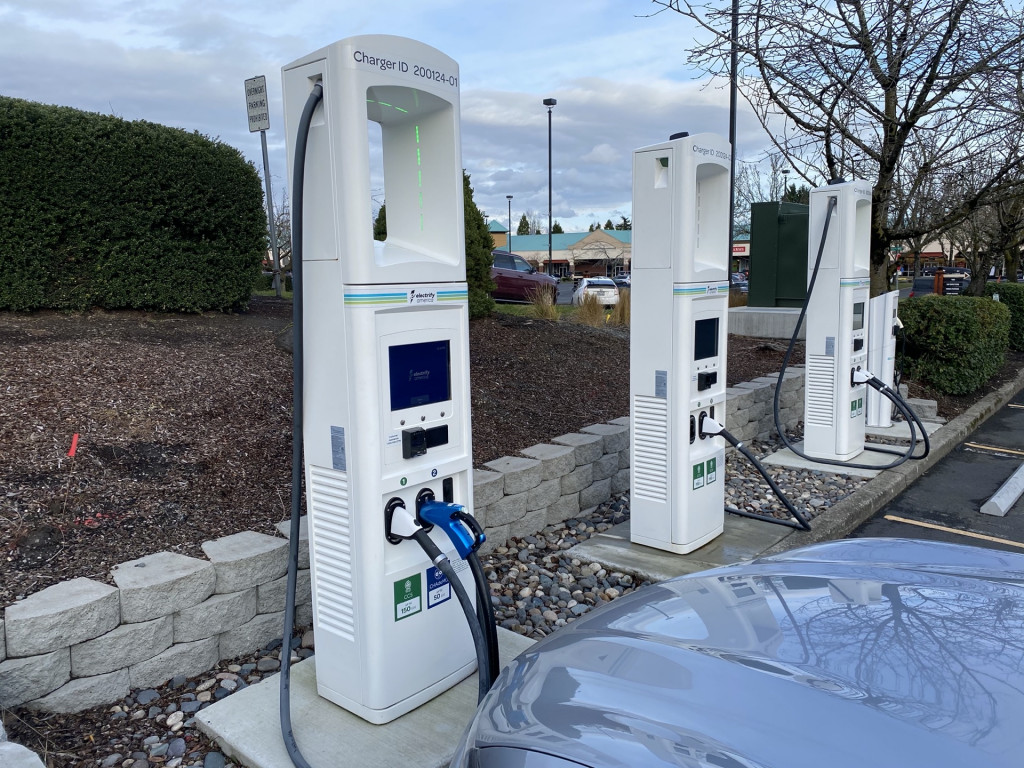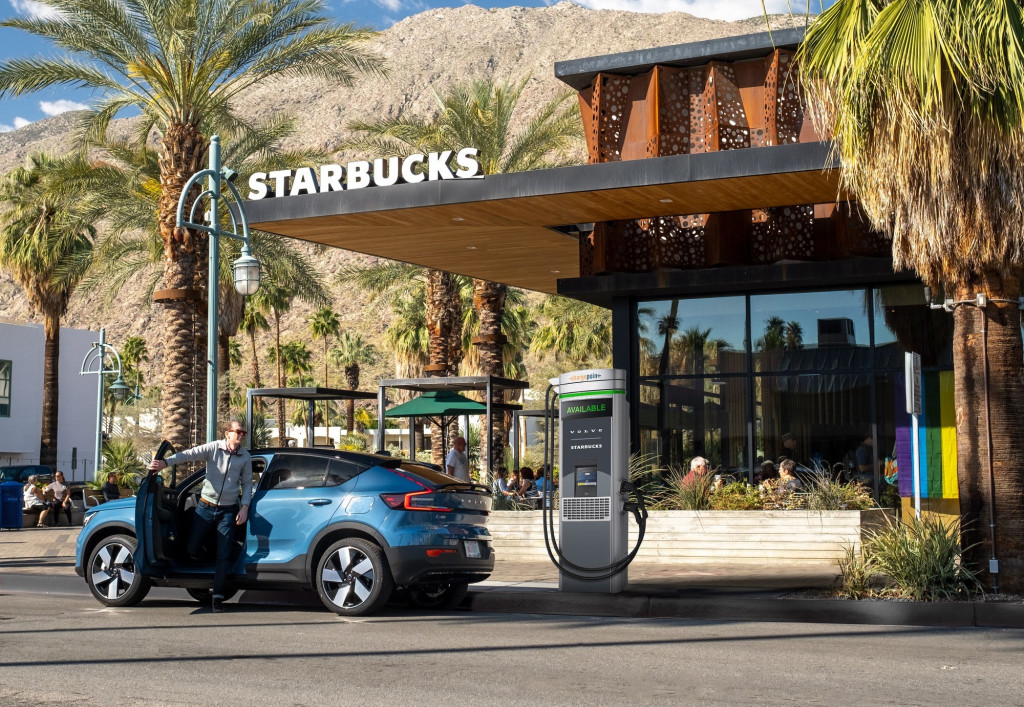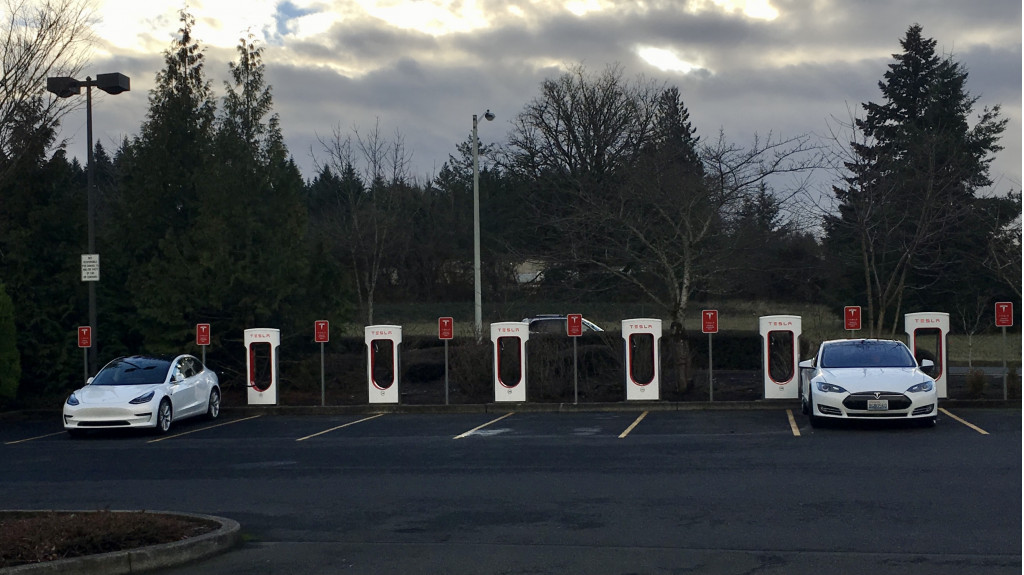The U.S. Department of Transportation and the Biden administration on Wednesday laid out a set of requirements for charging hardware—and charging network behavior—that any company looking at claiming federal funds in the buildout of the $7.5 billion national EV charging network will need to submit to. Even Tesla.
The final requirements add to the administration’s “Build America, Buy America” approach, and they’re requirements that any of the federally approved, state-designated processes granting companies any of the $5 billion designated as National Electric Vehicle Infrastructure (NEVI) funding will need to comply with.
NEVI is effectively the policy name of the national EV charging network that will eventually include 500,000 chargers, both along highways and within communities. The network is a key piece of the Bipartisan Infrastructure Law, which includes EV charging within its $650 billion investment through 2026 that includes traditional infrastructure as well such as roads, bridges, and mass transit. Of that, the law includes $7.5 billion in EV charging, $10 billion for various clean transportation projects, and more than $7 billion for EV batteries, critical minerals, and associated materials.

EVgo and GM
This federal network stipulates chargers placed 50 miles apart along designated corridors, with DC fast chargers all on the CCS format most non-Tesla EVs use. These latest rules make sure that all EV chargers purchased through the NEVI program—effective immediately—are U.S.-assembled, while the tighter rules will go into effect by July 1, 2024, assuring that there is at least 55% domestic content (by cost) in these products. To claim NEVI funding, any equipment that doesn’t fully comply with that higher content requirement must be installed before then.
The Biden administration notes EV charger production investments from Tritium, Electrify America, Siemens, Charge Point, FLO, Wallbox, SK Signet, ABB Mobility, and others. Tesla’s Supercharger hardware, for instance, is already made in Buffalo, New York.
Part of different networks
The federally funded buildout will not be on one coordinated network from a consumer standpoint. But to help smooth the level of disjointedness, the rules add clarity to some network and hardware aspects.
One of those is some added clarity on charger uptime. “The final rule also establishes that each charging port must have an average annual uptime greater than 97 percent,” according to DOT language, with decisions to round uptime to the nearest minute rather than hour.

Electrify America DC fast-chargers
New rules will also apply for reporting power dispensed, real-time port status, real-time customer price, and historical uptime. All such stations must be “physically accessible to the public 24 hours per day, 7 days per week, year-round.”
The rules do not restrict the ability for charging networks can charge lower prices to members, or those with particular models, so that could potentially enable a structure like what Tesla CEO Elon Musk suggested in 2021, allowing the company to charge extra for slower-charging EVs.
Payment methods can’t require a membership for use or “delay, limit, or curtail power flow to vehicles on the basis of payment method or membership.” They also need to comply with data privacy rules,
As part of the announcement, the administration spotlighted a series of EV investments from Tesla, GM, EVgo, Pilot, Hertz, and BP as among those “announcing new commitments to expand their networks by thousands of public charging ports in the next two years.”

Volvo pilot fast-charging network, via Starbucks
Examples include Hertz and BP and its announced intent to roll out charging hubs to serve ride-hailing drivers and car-rental customers; the coast-to-coast 350-kw network from GM and EVgo, at Pilot locations with more than 200 chargers on the way in 2023; Electrify America’s plans to install 1,000 chargers at 200 TravelCenters of America locations over five years; Mercedes-Benz’s network plan for more than 400 charging hubs with 2,500 public fast-charging ports; and the Seattle-Denver fast-charging network from Volvo and Starbucks.
For context, it’s worth noting that most or all of these announced investments have so far been made independent of whether they receive NEVI funds or not.
Reality check on Tesla's role
According to the administration, Tesla plans to open up “a portion” of its Supercharger and Destination charger network to non-Tesla EVs, making 7,500 chargers available to “all EVs” by the end of 2024.
According to the U.S. Department of Energy, Tesla currently has 19,385 ports—roughly equating to what the DOT document considers chargers—when combining the two charger types. So this would be a significant portion of Tesla's charging network when seen as a whole, but definitely a subset of it.
The federal government says that this number will include at least 3,500 new and existing 250-kw Superchargers along highway corridors.

Tesla Supercharger
It also points out Tesla’s plans to double its nationwide network of Superchargers, although it names no specific timeline and this doesn't appear to be in addition to previously announced Tesla targets for growth—such as Tesla's October 2021 target to triple the size of the Supercharger network in two years.
Does this mean Tesla will greatly expand its Supercharger network as part of the federal network? Likely not. But it’s conceivable that Tesla could sandbox part of its charging network into a NEVI-compliant portion and a non-NEVI-compliant portion.
Now, as the rule pretty much spells out, it’s time to build.













